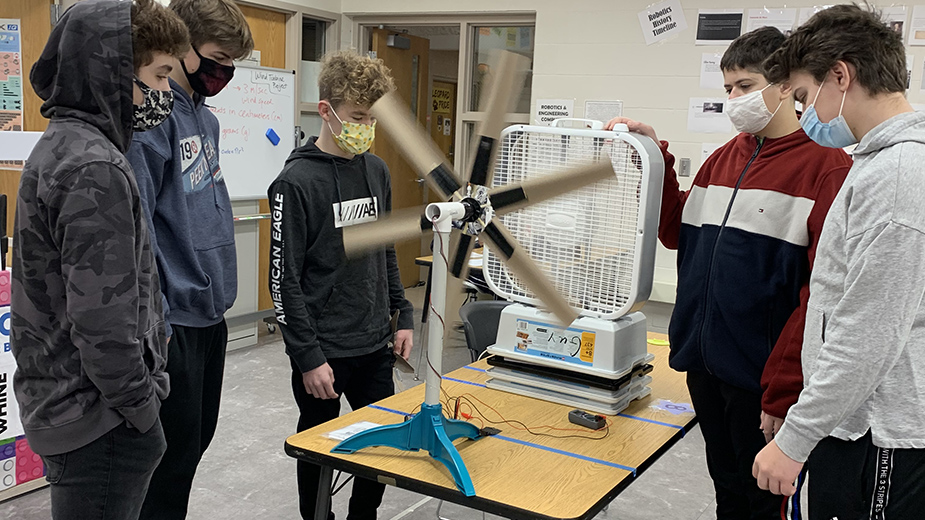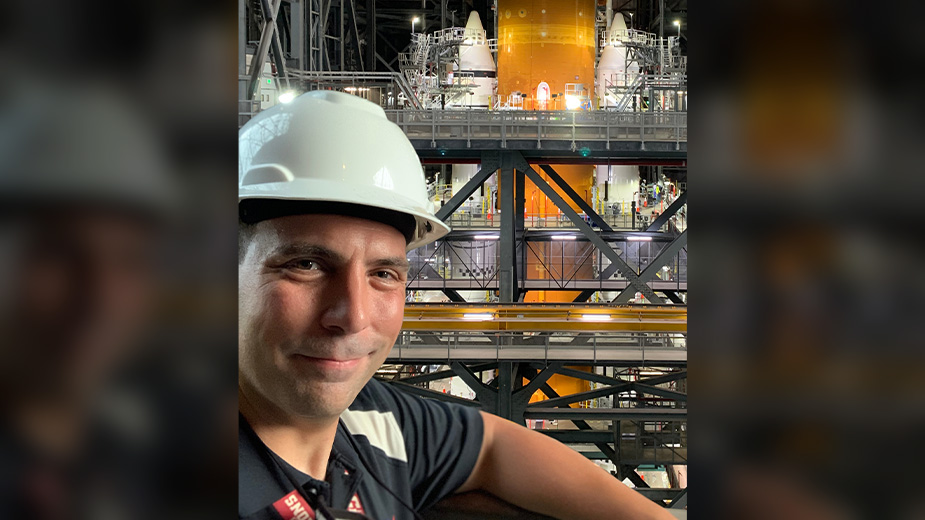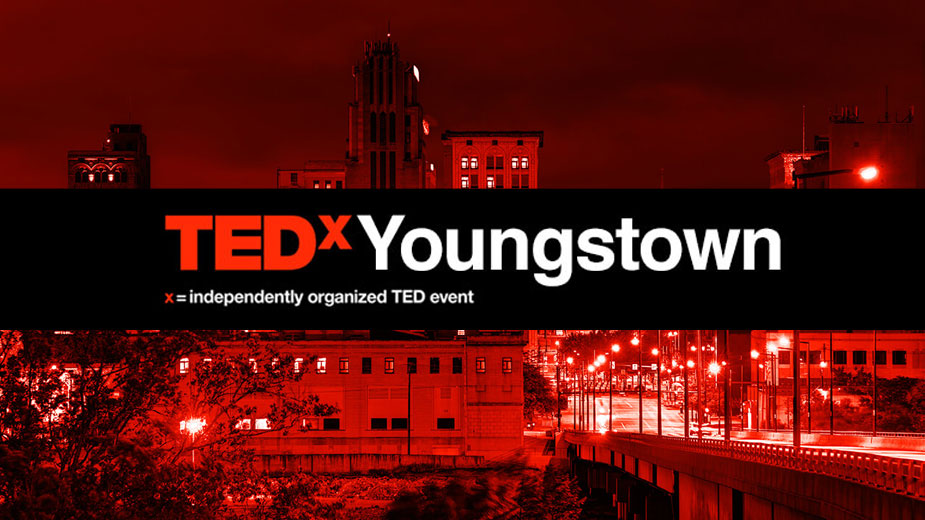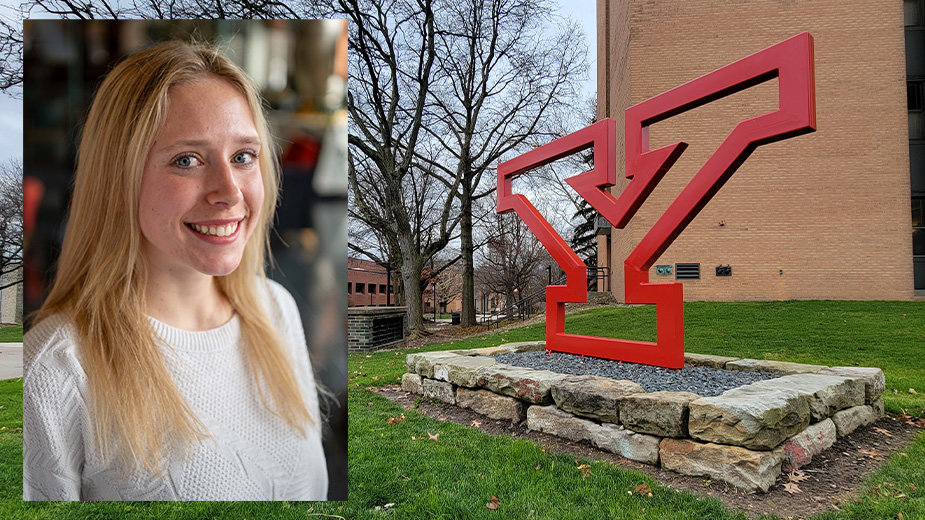Mahoning Valley to Mars: NASA Engages Next Gen
LIBERTY – Students at Liberty High School are getting a firsthand experience in what it means to work as a NASA engineer.
A $5,000 grant awarded this year through the NASA Glenn Innovative Student Programming initiative is providing materials and 13 iPads for students who participate in a series of after-school projects.
Carrie Sinkele, engineering and robotics instructor for Liberty Local Schools, says the projects are aligned with NASA’s Artemis program, which seeks to land the first woman and next person on the moon.
The first project, titled “Heavy Lifting,” challenges students to construct a balloon-powered rocket to transport a payload of paperclips, she says.
Students will measure how far and how high the rockets travel, how much weight they carry and if they can improve the outcome.
“The big thing is going through the engineering and design process steps,” Sinkele says. “We want the kids to think through the problem, think through solutions and develop the solution before they even get the material.”
The other projects comprise replicating NASA’s Space Launch System, or SLS, out of posterboard and mirroring its stages, as well as designing a durable crew module using Lego figurines.
Throughout the project, students will have direct contact with a NASA engineer to offer feedback on their projects.
“That’s the greatest perk of all,” Sinkele says. “We can teach the curriculum. But to actually meet somebody, I think that would be very memorable for the kids.”
The programming at Liberty is part of a collaborative effort between NASA Glenn Research Center in Cleveland and educational entities across the state. It’s designed to inspire the next-generation workforce to pursue STEM-related careers at NASA. Through its support service contractor Paragon TEC Inc., NASA awarded funding for up to $10,000 for materials that alleviate the digital divide while implementing virtual content with students.
Of the 16 projects NASA awarded, two were local – one to Liberty, the other to Advanced Methods in Innovation.
Sinkele is working with Advanced Methods to engage her seventh-grade class in a project that builds replicas of NASA’s Perseverance Mars rover.
The $8,000 granted to Advanced Methods is the most recent of eight NASA grants awarded to the nonprofit to date, says its executive director, Julie Michael Smith. Advanced Methods targets students in grades four to 12 with projects centered on science, technology, engineering and mathematics, or STEM education.
Advanced Methods uses the funds to augment NASA’s lesson plans by incorporating digital fabrication resources, such as 3D printers and laser cutters, Smith says. Typically, the rovers are built from toilet paper rolls and craft materials.
The nonprofit had students redesign the wheels and gears using 3D-printed or laser-cut parts, she says. For the body of the rover, students used Arduino boards programmed with a NASA coding system that Advanced Methods reworked to be used remotely with Chromebooks. Initially, the system worked only on PC computers, Smith says.
The rovers are outfitted with LED lights and solar panels, as well as sensors for light, temperature and proximity, she continues. Students are challenged to program the rover to move around a simulated planet surface, relying on the sensors to avoid obstacles.
In addition to reworking the coding system, Advanced Methods is using a portion of its funding to develop a STEM lending library. The nonprofit is building project kits geared toward programs it piloted last year in Canfield Middle School, and West Branch and Columbiana Exempted Village high schools, Smith says. It will build 100 kits with reusable components for NASA’s Save Our Breath project and 50 for its How to Measure the Moon project and lend the kits to schools.
“Oftentimes, in-school and out-of-school time programs want to use these hands-on learning kits. But they don’t have the financial resources to purchase them,” Smith says. “This will allow us to serve more students and remove the barrier of cost for many of these programs.”
Advanced Methods currently serves 48 students across the three schools. Through the collaboration with Liberty, it will serve at least 80, Smith says. And the STEM lending libraries will allow the organization to serve hundreds in the future.
For more information on the program, contact Smith at [email protected] or 330 727 6292.
Outreach and engagement efforts like the programming initiative are vital to ensuring a steady stream of “highly qualified STEM professionals and business professionals” seeking careers with NASA, says Catherine Graves, education program specialist at NASA Glenn Research Center’s office of STEM engagement.
For students interested in working at NASA, Graves recommends they take as many math and science courses as they can, as well as any available engineering and computer programming courses.
“All of these things are going to prepare them to one day help with NASA and to design and develop new innovative technologies that we need for space exploration and aeronautics advancements,” she says.
From now through August, NASA Glenn is inviting K-12 students to take part in a series of virtual STEM events and activities, including experiments, engineering projects and an essay contest. The activities are part of the celebration of NASA Glenn’s 80th anniversary and will educate students on NASA’s past, present and future, Graves says. More information is available at NASA.gov/centers/glenn/stem.
On April 16, high school students can participate in a virtual job shadow day to learn about professional STEM careers, as well as career paths at NASA in business fields and program management, she says.
Students will be divided into small groups to work directly with a NASA scientist, engineer or professional to discuss career paths, internship opportunities and the NASA Pathways program, which can lead to a civil servant position at NASA.
“Some of our past career focuses have been on mechanical engineering, electrical engineering, nuclear engineering,” she says. “We also have material scientists, fluid physicists and our project management professionals as well.”
Another event is Girls in STEM from 10 a.m. to noon on July 16. The event is for students in grades six to eight and includes a virtual tour, online presentation from a female engineer and participation in a live STEM activity.
Liberty’s Sinkele is gearing her after-school program specifically for girls in high school, junior high and even elementary school, she says, as a majority of her students in the engineering elective are boys. An engineer herself, she sees how male-dominated the industry is and wants to show the girls that they can do the work just as well, if not better.
“The end goal is to get more girls interested so we can see a greater influx in the high school courses,” Sinkele says.
According to the U.S. Census Bureau, women make up just 27% of workers in STEM occupations, among them social scientists, mathematical workers, life and physical scientists, computer workers and engineers. Of those occupations, engineers have the lowest representation of women at just 15% of the total engineering workforce.
Similarly, underrepresented minorities in the United States – including Black, Hispanic, American Indian or Alaska Native individuals – composed 13.3% of science and engineering occupations last year, reports the National Science Board in its “The State of U.S. Science & Engineering.”
While NASA Glenn is seeing a “slow but steady increase” in women and minorities in its workforce, it’s working to continue diversifying its workforce, Graves says. Collaborations through the NASA Glenn Innovative Student Programming initiative and virtual events help to demonstrate the diversity in its current workforce, she says.
“We find it’s important to provide diverse role models and mentors for students, because this helps them to visualize themselves as STEM professionals, build their STEM identities and can see themselves as scientists, engineers and professionals working at NASA Glenn,” Graves says.
Pictured: Ninth-grade engineering students at Liberty High School design and test wind turbine blades for the Ohio Kidwind Challenge Project. Pictured are Derek Leone, Nathan Malone, Luke Chandler, Saif Al-Sharif and Moawya Adhami. (Image provided by Liberty High School/Carrie Sinkele)
Copyright 2024 The Business Journal, Youngstown, Ohio.



